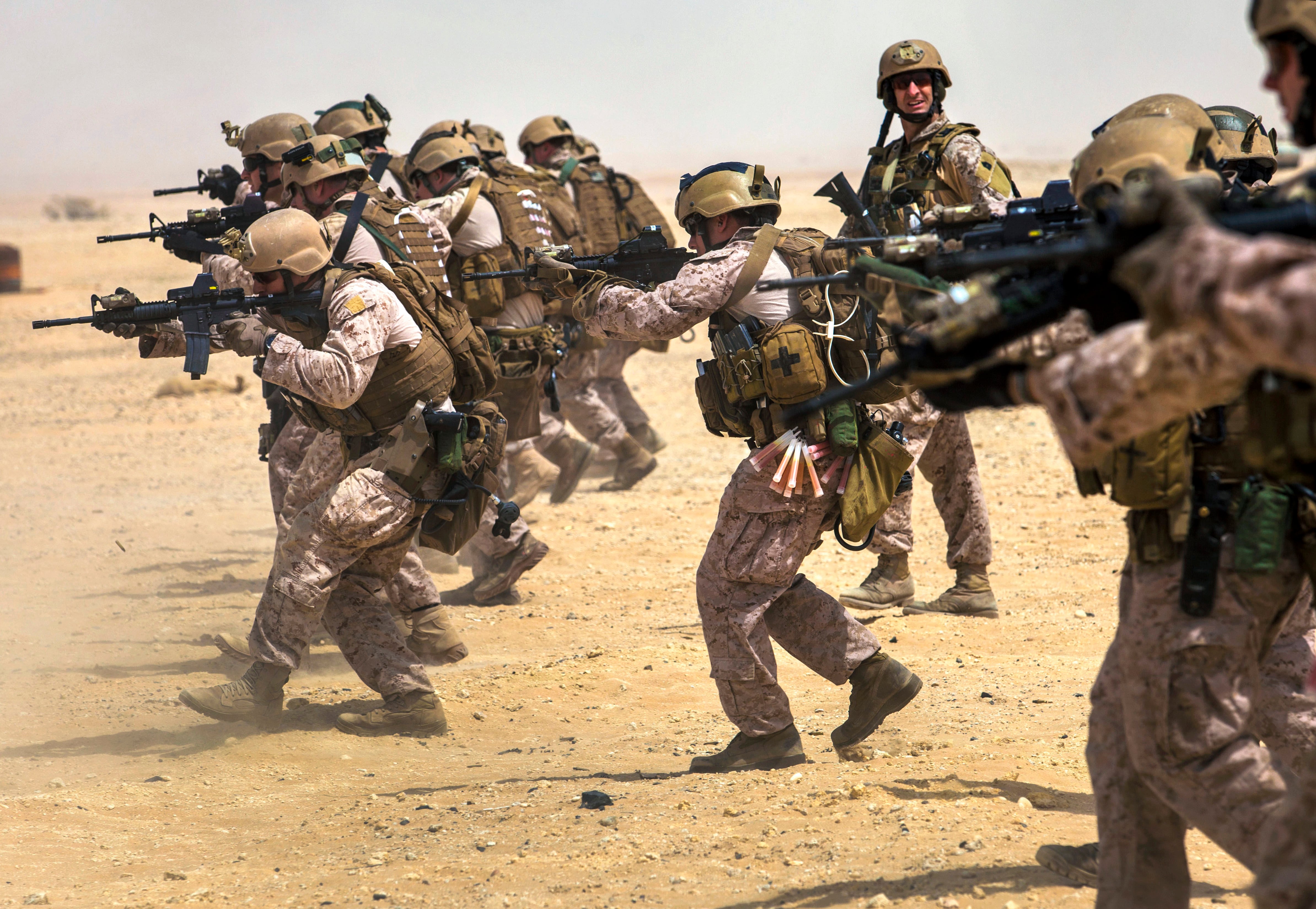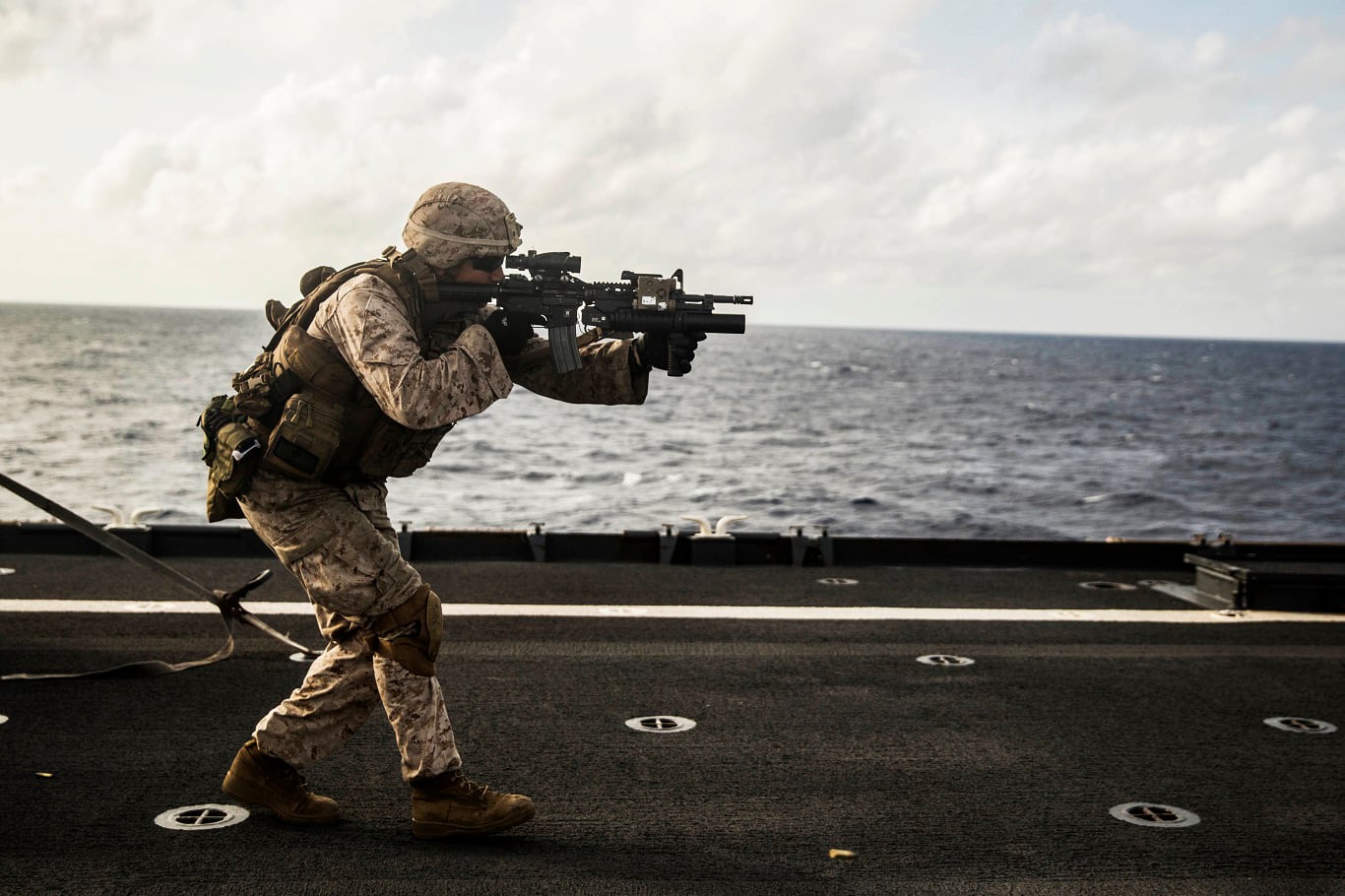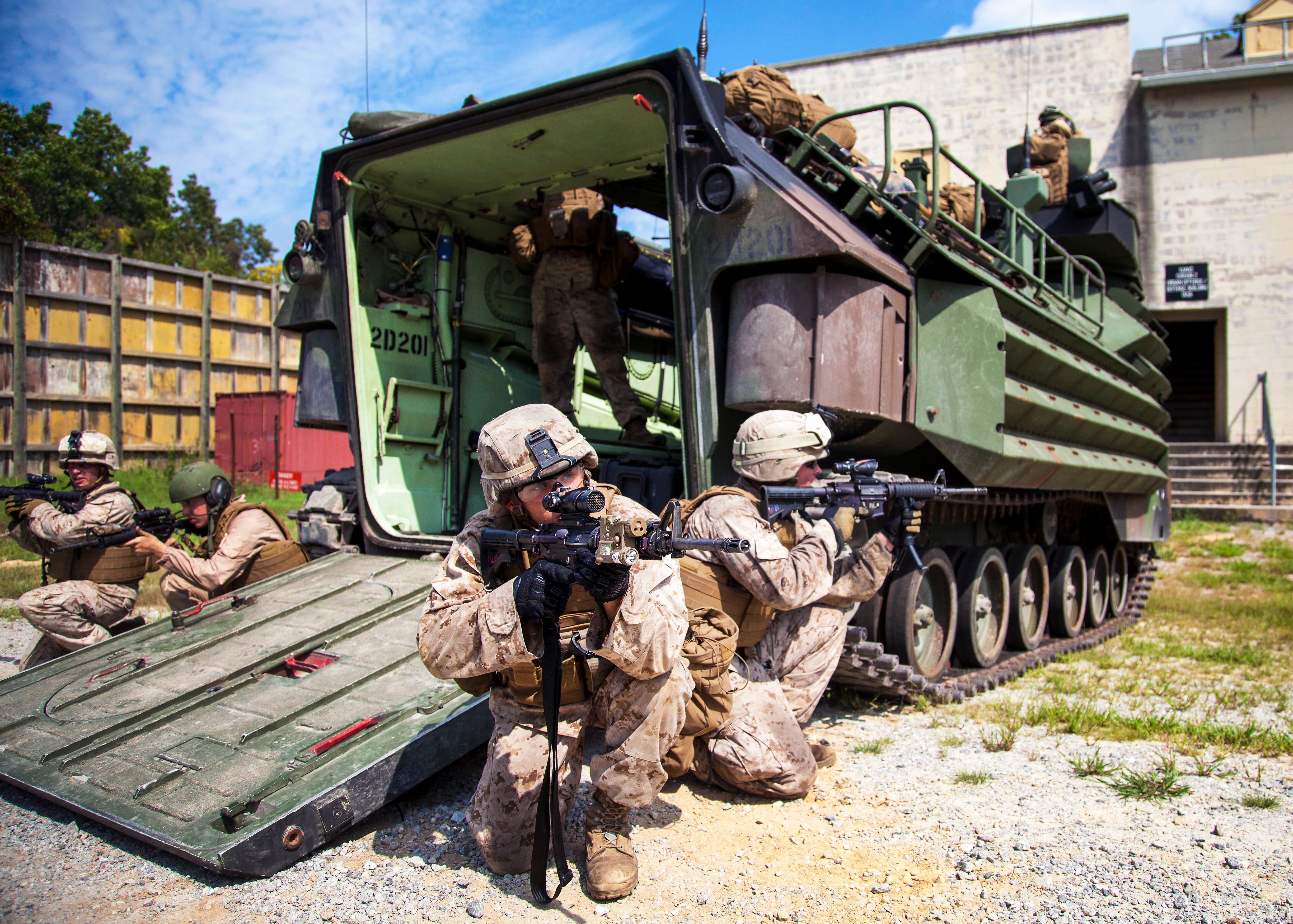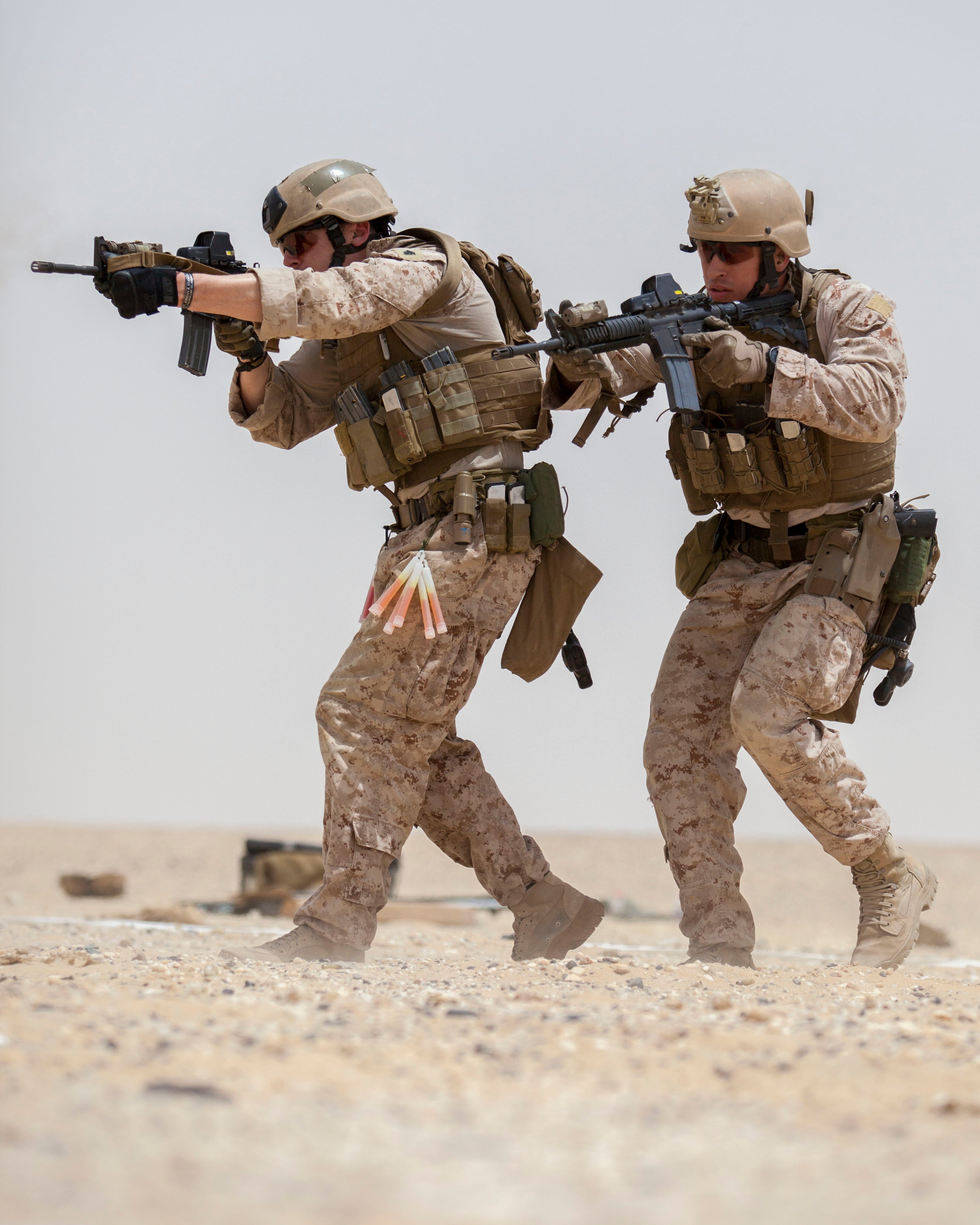Marine leaders have made the momentous recommendation to ditch the iconic M16 in favor of the M4 carbine as the new universal infantryman's weapon for infantrymen.
The recommendation to swap the venerated rifle that has served as the grunt's primary implement of war since Vietnam now sits on the commandant's desk, pending his final review and a decision. But, the swap appears imminent impending and if approved will relegate the M16 to a support role. It follows a similar shift already underway in the Army.
With the endorsement of several major commands already supporting the switch — including Marine Corps Combat Development Command; Combat Development and Integration; Plans, Policies and Operations; Marine Corps Systems Command; and Installations and Logistics — final word is possible in weeks or months.
"The proposal to replace the M16A4 with the M4 within infantry battalions is currently under consideration at Headquarters Marine Corps," according to a jointly written responses from the commands provided by Maj. Anton Semelroth, a Marine Corps spokesman in Quantico, Virginia.
The change would be welcomed lauded by infantrymen who say said the M16A4 was too long and unwieldy for close-quarters battle in Iraq or vehicle-borne operations in Afghanistan. They and who tout the M4 for its weight savings, improved mobility and collapsible butt stock, allowing the rifle to be tailored for smaller Marines or those wearing body armor.
"I would have to say my gut reaction is it's the right choice and will do a lot of good for the guys in the infantry," said Sgt. Nathan West, an explosive ordnance technician with 8th Engineer Support Battalion, who carried an M4 on dismounted patrols and vehicle-borne operations during made two deployments to Afghanistan as an anti-tank missileman. including dismounted patrols and vehicle-borne operations.
"The M4 is a great weapons system that has done everything I have ever asked of it," he added.
The proposed switch also gets the thumbs up from senior marksmen such as like the 1st Marine Division gunner, Chief Warrant Officer 5 Vince Kyzer.
"The carbine is a great weapon system for its time," he said. "...It will increase the war fighter's lethality and mobility." he said. As the Marine Corps infantry transitions to an M4 pure infantry, it will increase the warfighter's lethality and mobility," he said.

Marines with the 26th Marine Expeditionary Unit's maritime raid force fire M4 carbines during marksmanship training in Qatar. All Marine infantrymen could soon be issued the M4 in place of the M16A4 service rifle.
Photo Credit: Cpl. Christopher Q. Stone/Marine Corps
Ultimately, if the move to the M4 is approved by Commandant Gen. Joseph Dunford, the M16 would be used serve exclusively by with support personnel in communities like logistics or admin. Once approved, If approved by Dunford, the swap could happen as fast as unit armories can issue weapons . That is because individual units already have enough M4s in their current inventories to redistribute the 17,000 M4s needed to outfit infantrymen who don't already use one are in the current inventory, said to Barb Hamby, a Marine Corps Systems Command spokeswoman. Thus, officials described the move as an "improved capability for the infantry at no additional cost." The cost of maintenance and repair parts are also comparable between the M16 and the M4, they said.
Wider adoption of the M4 is just part of an overall small-arms modernization strategy that will look at incremental improvements, based on existing technologies as funding becomes available, to improve the service's weapons for the modern battlefield, according to a Marine official who said more details will likely be revealed in the months ahead.
For now, here is what Marines need to should know about the infantry's next likely weapon of choice — the M4 carbine.
The call for a compact weapon
Simply put, With a 20-inch barrel and an overall length of 3-feet, 3.5-inches, the M16A4 is too long for most modern engagements. It was something that became painfully obvious when Marines began slugging it out with insurgents in Iraq, often fighting room to room as they cleared houses, narrow hallways and stairwells.
The M16 showed it was likely better suited for engagements in open wilderness and not urban alleyways. The M4 by contrast makes maneuvering in tight urban spaces easier with a 14.5-inch barrel and an overall length that is about 10 inches shorter than the M16A4, in a package that is a pound lighter at just over six.
No fight illustrated the need for a smaller primary weapon during ferocious close-quarters combat better than that Operation Phantom Fury in Fallujah, Iraq. In November 2004, when Marines fought to wrest control of Fallujah the city from hardlined Iraqi insurgents, sometimes going confronting them in hand-to-hand. combat.
Rounding corners and getting on target in small rooms was difficult, leading to use of a tactic called "short-stocking," when a Marine places his their rifle stock s over his their shoulder – instead of securely against the chest their torso ((not shoulder???)) – and cants his weapon their rifle 45-degrees so he or more so they can still use his their optics. It helps in maneuvering, but compromises recoil management and follow-up shots.
"We were taught to short stock around tight corners when we got to our platoon for deployment — it was something unofficial," said Ryan Innis, a former scout sniper with 2nd Reconnaissance Battalion, who left the service as a sergeant in 2013 after serving on the 22nd Marine Expeditionary Unit's anti-piracy raid force near East Africa.
Innis trained for shipboard operations — the closest of close-quarters combat — and said he was fortunate to be issued the M4 because the weapon's shorter length proved better for tight spaces.

A Marine fires an M4 carbine during a short-range marksmanship qualification course while at sea. Marines say the M4's shorter barrel is especially conducive to shipboard movements.
Photo Credit: Sgt. Emmanuel Ramos/Marine Corps
In an urban environment that same shortness can still help you out," he said. "I would definitely agree the M4 is the way to go," he said.
The longer M16 was also challenging when hopping in and out of vehicles in full battle rattle, said West, who made his second deployment to Afghanistan in 2012 with 3rd Battalion, 9th Marines, as part of a vehicle-borne combined anti-armor team.
"Anytime you operate out of a vehicle, something compact makes life easier, especially when you need to get out quickly and engage [the] enemy," he said.
Even when he conducted dismounted patrols on his first Afghanistan deployment in 2011 with 1st Battalion, 6th Marines, the M4 he was issued got his hands on helped in clearing compounds, jumping or crossing walls and crossing deep ditches, he said.
West jumped to get his hands on an M4 just a month into that deployment when one was freed up in his unit. He never wanted to go back to the M16 because of the weight savings alone.
He said he started his first deployment "I started my first deployment carrying an M16A4; on top of that a Thor radio-controlled bomb jammer, ) – a backpack counter [radio controlled improvised explosive device] unit which is incredibly heavy; a metal detector, and ammo for an crew-served M240 machine gun. [medium machine gun]," he said.
"There was even a time carrying an M32 grenade launcher, so you can see the amount of weight we were carrying at that time," he said. "I think the main point in this day and age is our guys in the infantry are not purely riflemen. They are doing a lot of things anc carrying a lot of equipment. "Anything that takes weight off and keeps guys from getting tired so they are more aware of things around them is good. It is just a little less weight and just as effective of a weapon."

Members of Battalion Landing Team, 3rd Battalion, 2nd Marines, provide security after exiting an amphibious assault vehicle during a mock raid at Fort Pickett, Va. Marines say the M4's compact size makes it easier to fit into vehicles.
Photo Credit: Cpl. Chris Q. Stone/Marine Corps
That is exactly what the Marine Corps found when it began testing the ballistics of its infantry rifles and carbines using their improved M318 Mod 0 Special Operations Science and Technology round. Known as SOST, the service began using it in the warzone in 2010 as a "barrier blind" cartridge offering better penetration against common barriers like auto glass. The service found it also provided better ballistics during its flight to targets.
"The Marine Corps conducted an evaluation of its individual weapons (M4, M27 and M16A4), with specific focus on comparing accuracy, shift of impact and trajectory with improved ammunition, and determined the M4's overall performance compares favorably with that of the M27 IAR, the most accurate weapon in the squad," without any modifications, according to the written responses provided by Semelroth.
Negligible drawbacks
There are a few minor drawbacks to adopting the M4, but infantrymen seem to agree those are insignificant compared in comparison to the advantages.
Both Innis and West said trading in the M16's 20-inch barrel for the M4's 14.5-inch barrel does sacrifice some muzzle velocity, which translates into a slightly shorter effective range — although Colt markets both with an effective range of about 6506 yards. ((is this number correct??? when you have a number as specific as 656, it is counter to "about". Could we go with about 650 yards??? We can say 656. It is 656.168 when converting from Colt's meters to yards.))But that isn't a significant concern given the closer ranges at which Marines and soldiers commonly engage enemy in modern warfare.

Members of the 26th Marine Expeditionary Unit's maritime raid force fire M4 carbines during marksmanship training in Qatar. The M4 has a slightly shorter range than the M16 rifle.
Photo Credit: Sgt. Chris Stone/Marine Corps
To strike the enemy beyond the range of the M4 or even the M16, each Marine fire team already has an M27 Infantry Automatic Rifle, which in semi-auto with its free-floating barrel and precision trigger also now doubles as the designated marksman's rifle. It's a role that will no longer be filled by the Squad Advanced Marksman Rifle, a match-grade M16 with a scope. With the M27 Infantry Automatic Rifle, each fire team has a way to reach out and touch enemy combatants at longer ranges, as the IAR now often doubles as the designated marksman's weapon, a role that used to be filled by a souped-up M16, SYSCOM officials said Marines will no longer see on the battlefield.
"The infantry has done a good job of covering down long range with machine guns, grenade launchers, and precisions designated marksman style rifles – and the new IAR which is very accurate and can engage at distance very effectively," West said.
When the M27 that can't get the job done, combined arms doctrine means indirect fire and air assets are just a radio call away, West said.
"As far as accuracy, there is not an effect," he added, saying a longer rifle only really matters when using iron sights.
Greater distance between a weapon's front and rear sights, known as sight radius, makes a weapon easier to aim. But that doesn't apply with the Rifle Combat Optic that which the Marine Corps began using in 2005. The RCO is a type of reflex sight with which meaning a reticle is projected onto optical glass. For an accurate hit, a Marine only needs to ensure the reticle is on target without regard for sight alignment. ((getting a little geeky here - maybe better for a graphic))
A final advantage of the M4 that will be enthusiastically welcomed especially by male and female Marines of small stature is the carbines adjustable butt stock that allows individuals to adjust the weapon's length of pull or distance from trigger to the end of the butt stock.
Smaller Marines may find full-sized M16A4's with their fixed stocks uncomfortable. And for most Marines, the adjustable stock helps keep a consistent length of pull depending on whether or not they are wearing body armor and other gear.
When asked if the Marine Corps is making the right move, preeminent firearms expert and designer of the Marine Corps' Vickers Combat Applications Sling Larry Vickers gave a resounding yes.
"I'm the first one to subscribe to this," Vickers said of the M4's increasing popularity as the preferred option for modern combat.
The M4's profile got a boost when the Army, which adopted the M4 in 1994 for special operations, began issuing it more broadly to deploying infantry.((UNCLEAR - Vickers' backing lead to the Army adoption of the M4??? If so, need to say that more directly ... something like, on Vickers' recommendation was key to the Army's adoption ... etc.))
Vickers, a retired master sergeant who served 15 years in the Army's 1st Special Forces Operational Detachment – Delta, colloquially commonly known as Delta Force, dismissed arguments against the carbine based on its shorter effective range, saying nearly all real-world infantry engagements happen inside 200 yards. the zero to 200 yard range.
"Some argue beyond that the M4 carbine lacks effectiveness versus the M16, but the M16 is like driving a sports car with a six-cylinder engine," he said, because it is limited by the same small 5.56mm cartridge as the M4. "You can shoot 400 to 500 yards away, but you are still shooting a 5.56." ((which is the same as the M4, right? So need to mention that - the point being that though it can shoot longer, doing so with the 5.56 means you don't really gain much in accuracy or effectiveness ... ))
A longer barrel would make sense with a heavier hitting round like the .308, but unless Marines are given a larger caliber Vickers said the M4 is "bringing so much more to the table." that slight advantages of the M16 aren't worth the trade offs in weight and mobility."Since 9/11 advancements in the M4 carbine have made it unlike any small arm before.
"It is the world's gold standard," he said.




